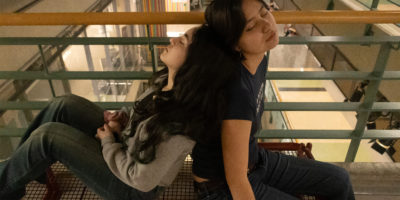By Mariam Nouser
Some nursing students, seasoned practitioners and Ryerson community members are challenging the way nursing and public health education excludes social justice and grassroots movements.
Cathy Crowe, a long-time street nurse and distinguished visiting practitioner at Ryerson University, said her memoir, A Knapsack Full of Dreams, was written in response to a lack of social justice teachings in nursing.
According to Crowe, street nurses work with society’s most vulnerable populations and those living in extreme poverty.
Ryerson community member, Marleane Davidson, said her experience living in extreme poverty would have been helped if more funding went towards street nursing and street health.
“I was diagnosed with diabetes and when I was living in a shelter, I was told to choose between fruit or vegetables and my health. If I had a dietician in the shelter as well as a nurse, I would have fared much better.”
Ryerson alumnus, Hannah Stahl, founded Nursing Students for Social Justice at Ryerson. The group is meant to collaborate with students to increase their political engagement, professional development and community contribution, according to the website. The group’s activities state online that it includes donation drives, specialty-focused master classes and collaborative training workshops.
“I think nursing education falls short in instilling students the power that our profession holds and allowing students to critically question structural issues,” said Stahl.
Fourth-year social work student Alannah Fricker said Crowe’s commitment to social justice education in the classroom has inspired her to think critically and to challenge public health programs to further add social justice and grassroots organizing into their teachings.
Shahed Ghadban, a second-year nursing student said she doesn’t believe school prepares one for the real world.
“In nursing, for example, they teach us how to perform a procedure in very specific steps with a lot of detail. However, when you get to clinical, you realize different nurses perform the same procedure in many different ways. Also, different institutions have policies that affect the way you perform a certain procedure,” she said.
“I don’t think the program can ever fully prepare us to work with at-risk people. Maybe if we’re taught more in-depth about at-risk people and given a placement that works directly with them we will feel more prepared.”
Despite that, Ghadban said that there are some courses like NSE 112: social, political and economic perspectives and NSE21A/B: concepts, individual and family that focus on grassroots movements in nursing fields. She said these courses help nursing students treat vulnerable communities and spot power dynamics.
A representative from Ryerson’s nursing program did not respond since The Eyeopener requested comment in the middle of November.
Roxanne Danielson, a street nurse based in Toronto, said that “nursing school does not prepare students to work in such precarious situations” and that for her, “coming from a privileged, middle-class family proved to be hard at the start.”
Fourth-year nursing student Parmeet Kahlon said she believes that since first year, students have been introduced to concepts like the study of consciousness and social justice, and engaged routinely in critical thinking.
Kahlon said advocacy for vulnerable populations have been covered in the curriculum, with several assignments to critically analyze these issues to ensure students do not prevent equitable care.











Leave a Reply